|
Notes: The station was immediately east of the Scalby Viaduct. There was a single platform on the down side of the line with a goods bay to the rear of the platform and a further siding. The station building was converted to holiday accommodation after the station became unstaffed. After closure some trains continued to stop until 1964 serving the occupants of the two camping coaches which were located in the goods bay platform..The station and the nearby hump bridge were demolished in 1974 to make way for a housing development which incorporates some of the stones from the old station.
BRIEF HISTORY OF THE SCARABOROUGH & WHITBY RAILWAY
The Scarborough & Whitby Railway was a late arrival on the railway scene opening on 16th July 1885 long after the first proposal to open a line between the two towns in the 1848. One of the problems in building a line was the hilly topography and many of the early schemes foundered because of the difficulty of finding an economic route and raising sufficient capital to construct the line.
A bill was eventually put before Parliament and received Royal Assent on 5th July 1865 authorising the incorporation of the Scarborough & Whitby Railway. The North Eastern Railway opposed the scheme as they had an inland route between the two towns but this was 56 miles in length while the proposed line was only 19 miles. The promoters of the line countered this opposition listing the abundant mineral resources in the district which would ensure that the lines profitability.
 Unfortunately, sufficient capital to start work couldn't be raised and the powers lapsed. In 1870, a new route was proposed and a further act received Royal Assent on 29th June 1871 and this time funds were available with construction starting on 3rd of June 1872. Progress was exceedingly slow however, by August 1873 the first seven miles at the Scarborough end were ready for the ballast and permanent way but at the Whitby end the land hadn't even been acquired and a further Act was required. Despite this, construction ground to a halt in 1877 when there was insufficient funds to pay the contractors. There were demands that the company should go into receivership but in 1878 a new contractor offered to take over the liabilities of the company and complete the line on favourable terms; this came to nothing until, in 1879, a new Bill was put before Parliament to revive the powers of the 1871 and 1873 Acts and to extend the periods for the purchase of land and completion of the railway. Unfortunately, sufficient capital to start work couldn't be raised and the powers lapsed. In 1870, a new route was proposed and a further act received Royal Assent on 29th June 1871 and this time funds were available with construction starting on 3rd of June 1872. Progress was exceedingly slow however, by August 1873 the first seven miles at the Scarborough end were ready for the ballast and permanent way but at the Whitby end the land hadn't even been acquired and a further Act was required. Despite this, construction ground to a halt in 1877 when there was insufficient funds to pay the contractors. There were demands that the company should go into receivership but in 1878 a new contractor offered to take over the liabilities of the company and complete the line on favourable terms; this came to nothing until, in 1879, a new Bill was put before Parliament to revive the powers of the 1871 and 1873 Acts and to extend the periods for the purchase of land and completion of the railway.
New engineers were appointed and work restarted in June 1881 with the line finally opening on 16th July 1885. From the outset the line was worked by the North Eastern Railway but this didn't prove satisfactory and three years after it had opened the local company took the operating company to court claiming that the North Eastern Railway were failing to operated the line in a profitable manner quoting a number of different grievances. The North Eastern Railway countered this the following year claiming that the Scarborough & Whitby Company hadn't completed the line in accordance with the working agreement between the two companies detailing a schedule of uncompleted work. Eventually the S&W Company signed a new agreement to pay for this work.
The S&WR was not a profitable line from the outset, partly due to the antagonism that existed, between the two companies but principally because of the vast amount of capital that had been expended. After operating at a loss for some years the NER bought the line outright on 1st July 1898
 In the early 1930's traffic improved considerably with the introduction of cheap fares aimed at holidaymakers. Prior to 1933 trains were run over the coast line either between Scarborough and Whitby or between Scarborough and Saltburn but in that year Middlesbrough took over as the northern terminus. This meant that through trains were working a 58 mile route, 37 miles of which was single track, with limited passing places. The gradients were also amongst the most severe in the North Eastern area and the presence of frequent sea fog, which made the rails slippery, aggravated the problem. In the early 1930's traffic improved considerably with the introduction of cheap fares aimed at holidaymakers. Prior to 1933 trains were run over the coast line either between Scarborough and Whitby or between Scarborough and Saltburn but in that year Middlesbrough took over as the northern terminus. This meant that through trains were working a 58 mile route, 37 miles of which was single track, with limited passing places. The gradients were also amongst the most severe in the North Eastern area and the presence of frequent sea fog, which made the rails slippery, aggravated the problem.
In 1933 traffic was so heavy in the summer that great difficulty was experienced in working the service and a Committee on the Working of the Coast Line was set up. Their brief was to make recommendations to give a greatly improved service in the summer of 1934. The Committee visited every station to discuss the working difficulties and their suggestions included the provision of two new passing places and improved signalling and the building of a bay platform at Scarborough Central. Initially the line was to have had its own terminus at Scarborough but in 1884 the NER had agreed to provide temporary goods and passenger accommodation at its Central Station.
Although the passing loops were deferred there was an increase in traffic but it was short lived and was only seasonal. Camping coached were introduced at five stations on the line, Scalby, Cloughton, Staintondale, Ravenscar and Robin Hood's Bay, these quickly proved to be very profitable. With the rapid popularity of road transport after WW2 traffic quickly declined and the line quickly lapsed into unpredictability. The camping coaches were still operating at a profit but this was insufficient to save the line which closed to goods traffic on 4th August 1964 and to passengers on 6th March 1965.
Today the route of the railway forms a popular footpath and cycleway known as the Scarborough to Whitby Trailway.
Source: The Scarborough & Whitby Railway by J. Robin Lidster. Hendon Publishing 1977
ISBN 0 86067 016 3. Tickets from Michael Stewart, old photographs from Neil Cholmondely
Further reading: Railways Around Whitby Volumes One and Two written and published by Martin Bairstow. ISBN 978-1-871944-34-1
To see other stations on the Scarborough - Whitby Railway click on the station name: Cloughton, Hayburn Wyke, Stainton Dale Ravenscar, Fyling Hall,
Robin Hoods Bay & Hawsker
Click here for pictures of Falsgrave Tunnel |


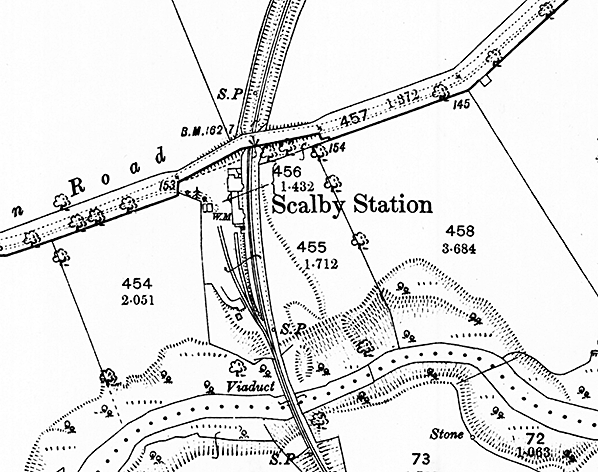
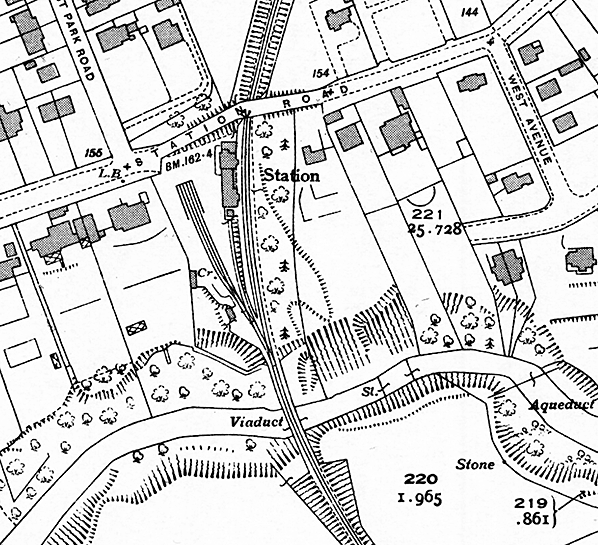
old10.jpg)
old11.jpg)
old6.jpg)
old5.jpg)
old4.jpg)
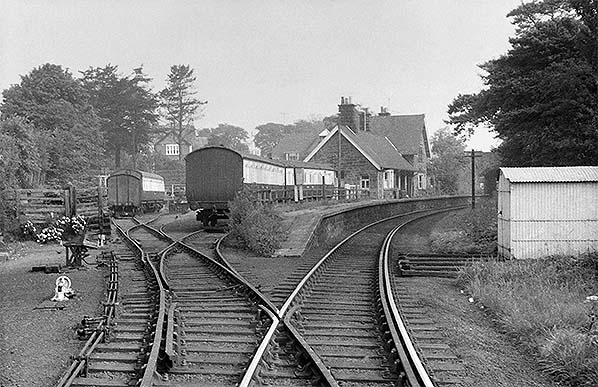
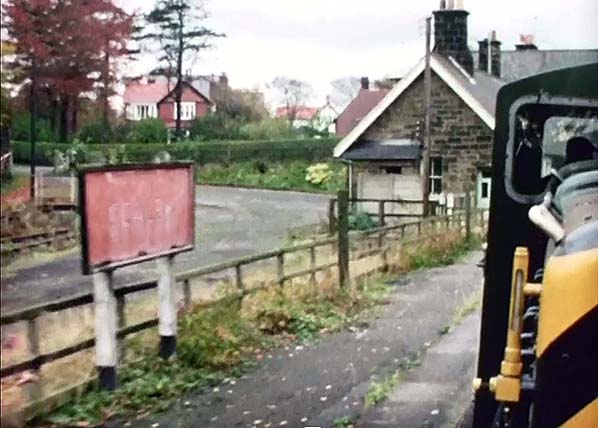 A BR Demolition Special is seen pulling into Scalby on 31 October 1967. The special was for potential demolition contractors and some privileged enthusiasts.
A BR Demolition Special is seen pulling into Scalby on 31 October 1967. The special was for potential demolition contractors and some privileged enthusiasts.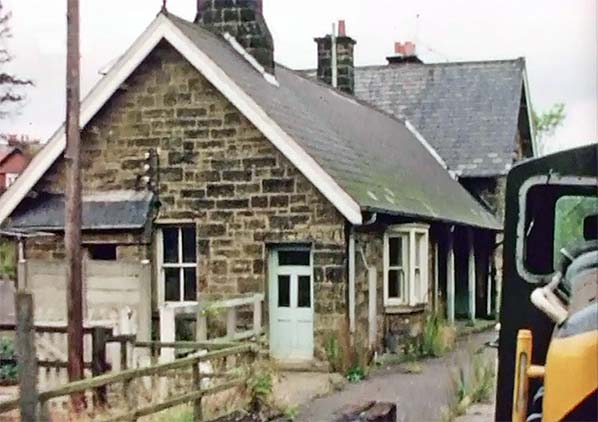
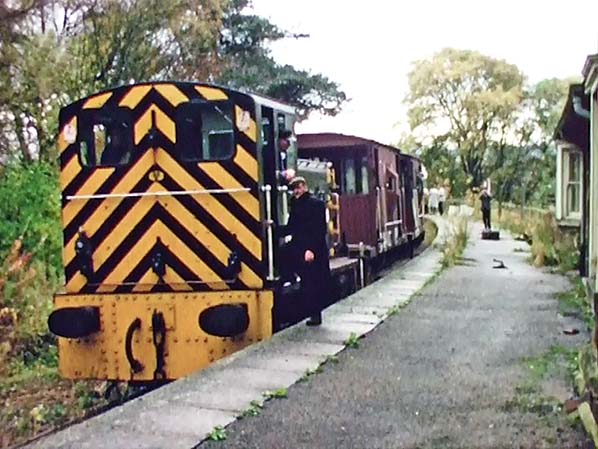
3.jpg)
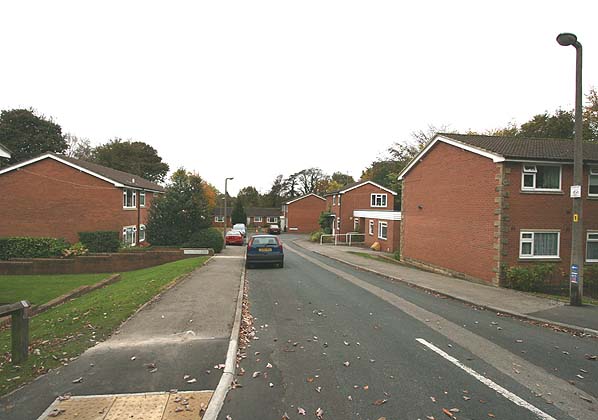
 Home Page
Home Page 
 Unfortunately, sufficient capital to start work couldn't be raised and the powers lapsed. In 1870, a new route was proposed and a further act received Royal Assent on 29th June 1871 and this time funds were available with construction starting on 3rd of June 1872. Progress was exceedingly slow however, by August 1873 the first seven miles at the Scarborough end were ready for the ballast and permanent way but at the Whitby end the land hadn't even been acquired and a further Act was required. Despite this, construction ground to a halt in 1877 when there was insufficient funds to pay the contractors. There were demands that the company should go into receivership but in 1878 a new contractor offered to take over the liabilities of the company and complete the line on favourable terms; this came to nothing until, in 1879, a new Bill was put before Parliament to revive the powers of the 1871 and 1873 Acts and to extend the periods for the purchase of land and completion of the railway.
Unfortunately, sufficient capital to start work couldn't be raised and the powers lapsed. In 1870, a new route was proposed and a further act received Royal Assent on 29th June 1871 and this time funds were available with construction starting on 3rd of June 1872. Progress was exceedingly slow however, by August 1873 the first seven miles at the Scarborough end were ready for the ballast and permanent way but at the Whitby end the land hadn't even been acquired and a further Act was required. Despite this, construction ground to a halt in 1877 when there was insufficient funds to pay the contractors. There were demands that the company should go into receivership but in 1878 a new contractor offered to take over the liabilities of the company and complete the line on favourable terms; this came to nothing until, in 1879, a new Bill was put before Parliament to revive the powers of the 1871 and 1873 Acts and to extend the periods for the purchase of land and completion of the railway.
 In the early 1930's traffic improved considerably with the introduction of cheap fares aimed at holidaymakers. Prior to 1933 trains were run over the coast line either between Scarborough and Whitby or between Scarborough and Saltburn but in that year Middlesbrough took over as the northern terminus. This meant that through trains were working a 58 mile route, 37 miles of which was single track, with limited passing places. The gradients were also amongst the most severe in the North Eastern area and the presence of frequent sea fog, which made the rails slippery, aggravated the problem.
In the early 1930's traffic improved considerably with the introduction of cheap fares aimed at holidaymakers. Prior to 1933 trains were run over the coast line either between Scarborough and Whitby or between Scarborough and Saltburn but in that year Middlesbrough took over as the northern terminus. This meant that through trains were working a 58 mile route, 37 miles of which was single track, with limited passing places. The gradients were also amongst the most severe in the North Eastern area and the presence of frequent sea fog, which made the rails slippery, aggravated the problem.
old1.jpg)
_thumb_old12.jpg)
_thumb_old2.jpg)
_thumb_old12.jpg)
_thumb_old3.jpg)
_thumb_old7.jpg)
_thumb_old8.jpg)
_thumb_old9.jpg)

